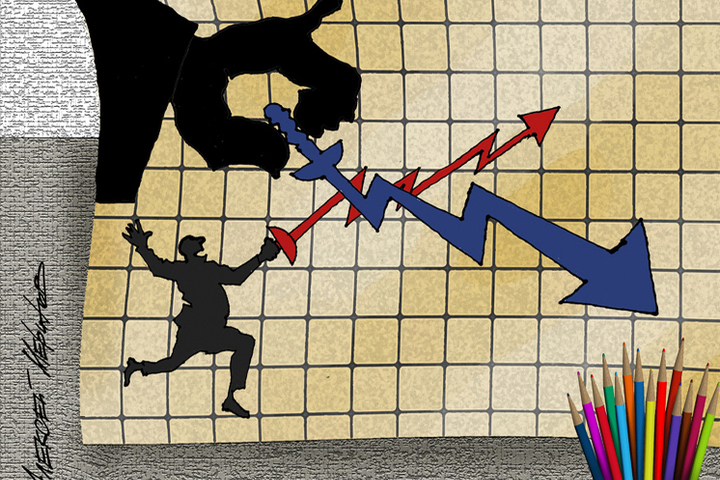Real incomes of Russians have grown unrealistically: experts named the reason
[ad_1]

Citizens have a budget boost to thank
In 2023, real disposable income of the population increased by 5.4%, Rosstat reported. The increase is impressive and, according to experts, is quite consistent with the real state of affairs. But we are talking about the “average temperature in the hospital”: there are enough social categories in the country, and each has its own income situation. Each individual Russian has his own situation: there are many who have been spared by this wonderful trend. In general, it makes sense to take a closer look at the details.
In its annual report on socio-economic development, Rosstat provides the following figures: in 2023, the average monthly nominal income of citizens was 50,265 rubles; nominal income increased by 10.9% (compared to 2022); real (adjusted for inflation) – by 4.6%, real disposable (minus mandatory payments – by 5.4%).
These statistics are closely linked to a key macroeconomic indicator, which largely sheds light on its nature. Namely: GDP over 12 months increased by 3.6%, exceeding departmental forecasts. In particular, in September the Ministry of Economic Development expected annual growth at 2.8%. The positive dynamics turned out to be the highest since 2021, when, against the background of the low base of the pandemic year 2022, GDP grew by 5.9%. According to the head of the Ministry of Economic Development, Maxim Reshetnikov, the basis for this dynamics was internal resources. First of all, high consumer demand, which in turn is caused by rising wages.
“Rosstat collects data on individual households, of which there are several tens of thousands throughout the country,” says Alexander Shneiderman, head of the sales and customer support department at Alfa-Forex. – Family incomes are growing unevenly, and for various reasons, but in the end Rosstat produces a certain average value. Most often, the dynamics are associated with an increase in the volume of social payments, wages of public sector employees and other measures carried out directly by the state. The incomes of those who work in large business enterprises are also regularly indexed and reflected in statistics.”
But the situation with Russians working for small and medium-sized businesses is not so transparent. At the same time, Shneiderman notes, in the last two years the trend towards whitening citizens’ incomes has intensified: people are increasingly less likely to receive salaries “in an envelope”. This circumstance may also influence the increase in official indicators.
“The data from Rosstat is quite representative,” says Igor Nikolaev, chief researcher at the Institute of Economics of the Russian Academy of Sciences. – We must not forget about the colossal budget impulse of the first half of 2023, with the help of which it was possible to reduce the then truly catastrophic budget deficit. These financial injections, having boosted industry (primarily manufacturing), ensured growth in the private sector. Including salary. Plus, various types of social payments were indexed. In addition, throughout the past year, the labor market experienced a growing personnel shortage, which forced employers to engage in a wage race in order to attract new workers (or retain old ones) against the backdrop of fairly high inflation (7.4%).”
Of course, the overall picture is far from complete. Many in the country will quite rightly say that they have not even heard of any increase in income – this joyful moment passed them by. At the same time, a number of companies, with many thousands of employees, index salaries by 15% two or three times a year, and at the end of the year they pay employees bonuses of 100 thousand rubles. In Nikolaev’s opinion, in 2024 the growth of real disposable income will continue, but at a slower pace, since there will be no budgetary impulse comparable to last year.
“In general, in 2023, everyone expected a drop in economic activity and household incomes, especially in the fourth quarter. In the end, everything happened exactly the opposite,” recalls Alexey Vedev, director of the Center for Structural Research at RANEPA. “It’s difficult for me to judge how accurate Rosstat’s estimates are, but it is clear that the dynamics of income growth is due, firstly, to the indexation of social payments, and secondly, to the forced need to increase wages due to a shortage of workers.”
According to Vedev, the key question on the answer to which the income situation in 2024 depends: is the economy able to continue to maintain a growth rate of 3.6% or will it face stagnation (growth of less than 1.5%)? The expert considers the second scenario more likely. “Also for the reason that high interest rates slow down lending activity in almost all sectors, the mortgage market is rapidly degrading,” says Vedev.
[ad_2]
Source link






